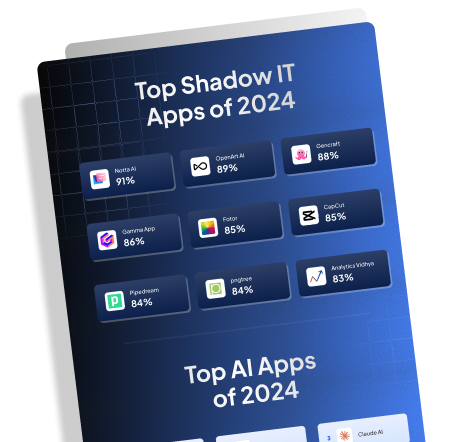Ever feel like managing your SaaS tools is like trying to catch smoke with a net? Amidst the tangled web of software solutions, one pressing question remains: Do SaaS Management Platforms Discover Everything? We get it—SaaS sprawl is a real headache. Rest assured, this article will cut through the noise and offer clear insights. Stay tuned, and if you’re eager to dive deeper into SaaS Management Platforms, visit Torii HQ Blog.
Do SaaS Management Platforms Discover Everything?
What are SaaS Management Platforms?
SaaS Management Platforms (SMPs) are tools designed to help organizations manage, monitor, and optimize their usage of Software as a Service (SaaS) applications. These platforms assist in discovering applications, facilitating usage and compliance tracking, and providing cost management insights.
How Effective is Discovery?
Discovery capabilities can vary among different SMPs. The success of these platforms largely depends on their ability to integrate multiple data sources. Primary discovery sources include Identity Providers (IDP), browser extensions, direct integrations, and finance data.
Are Sanctioned Apps Easier to Find?
Most SMPs are highly efficient at locating sanctioned or officially approved applications. These are typically apps for which the organization holds licenses or has documented usage agreements. The integration with IDPs often contributes significantly to identifying sanctioned apps by monitoring authentication and usage patterns.
What About Shadow IT Apps?
One of the significant challenges faced by SMPs is uncovering shadow IT applications—those that are in use without official approval. These might be free tools, trial versions, or paid apps purchased by individual employees outside the visibility of the IT department. The detection of shadow IT often requires analyzing broader data sets, such as network traffic or expense reports, making the process more complex.
The Role of Filtering
Why is Filtering Necessary?
Effective discovery isn’t just about identifying every application; it’s also about filtering out irrelevant ones. For instance, businesses need to focus on professional apps that drive productivity and compliance, not personal ones like Netflix, gaming apps, or dating services. This ensures that the insights generated by the SMP are relevant and actionable.
How Do SMPs Filter Data?
SMPs can employ various filtering mechanisms. They can use predefined categories and machine learning algorithms to distinguish between business and personal apps. Additionally, admin-configurable settings can help tailor the visibility of applications based specifically on an organization’s policies and usage contexts.
Balancing Act: Discovery and Sensibility
While SMPs aim to provide comprehensive visibility into SaaS usage, they strike a balance between thorough discovery and practical filtering. The efficiency of these platforms depends on the robustness of their discovery methods and their algorithms’ ability to filter relevant from irrelevant data. Mental frameworks like understanding the types of data sources and the filtering logic provide valuable insights into an SMP’s effectiveness.
In the next section, we’ll cover tactics and best practices to enhance the discovery capabilities and overall effectiveness of SaaS Management Platforms.
Best Practices for Optimizing SaaS Management Platforms
Implement Comprehensive Discovery Mechanisms
Start by ensuring that your chosen SaaS Management Platform (SMP) integrates multiple data sources effectively. Identity Providers (IDP), browser extensions, direct integrations, and finance data are key sources that enhance the accuracy of application discovery. Thorough integration is crucial for identifying both sanctioned and shadow IT applications. When evaluating SMPs, consider those that offer robust and comprehensive integration capabilities.
Adopt and Tailor Filtering Criteria
One size doesn’t fit all when it comes to filtering data within SMPs. Leverage admin-configurable settings to tailor the platform’s visibility according to your organization’s specific needs and policies. The objective is to streamline the recognition of productivity and compliance-driving apps while excluding personal or irrelevant software. Smart filtering will ensure that insights provided by the SMP are actionable and relevant.
Educate and Train Employees
A well-informed workforce is critical to minimizing shadow IT risks. Hold regular training sessions to educate employees about the importance of using sanctioned applications and the potential security risks of unauthorized tools. Encourage them to notify the IT department about any new software they intend to use, which helps enhance transparency and discovery.
Regularly Monitor and Review SaaS Usage
Establish a routine to monitor and review SaaS application usage within the organization. Periodical audits and automatic reporting functionalities within the SMP can reveal trends and anomalies. A disciplined approach to monitoring helps in promptly identifying any emerging shadow IT risks or under-utilized sanctioned apps, assisting in better resource allocation and cost management.
Utilize Advanced Analytics and Machine Learning
Leverage the advanced analytics and machine learning capabilities of your SMP to gain deeper insights. These tools can refine application discovery, highlight usage patterns, and predict future needs. By continuously learning from the data, these algorithms help in improving filtering accuracy and detecting anomalies more efficiently.
Integrate SMP with Broader IT Ecosystem
Maximize the potential of your SMP by integrating it with other IT management tools such as asset management systems, cybersecurity platforms, and financial systems. Integrated ecosystems facilitate seamless data flow and holistic insights, providing a comprehensive view of your IT landscape and enhancing decision-making.
Evaluate and Update SMP Capabilities
The SaaS landscape is dynamic, making it essential to periodically evaluate the effectiveness of your SMP. Assess features, user feedback, and industry advancements to ensure that the platform continues to meet the organization’s evolving needs. Stay updated with the latest capabilities and upgrades offered by your SMP provider, such as AI-driven discovery enhancements and new integration options.
Adopt a Leading SMP Solution
Invest in a leading SMP like Torii, which is renowned for its robust discovery capabilities and user-friendly interface. Torii offers extensive integration options and advanced analytics to help organizations manage their SaaS ecosystems effectively. Learn more about Torii and how it can elevate your SaaS management strategy.
By following these best practices, organizations can enhance the discovery capabilities and overall effectiveness of their SaaS Management Platforms, ensuring better control, compliance, and cost efficiency in managing their software applications.





